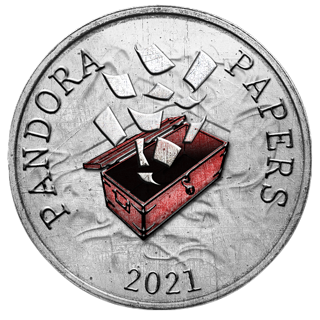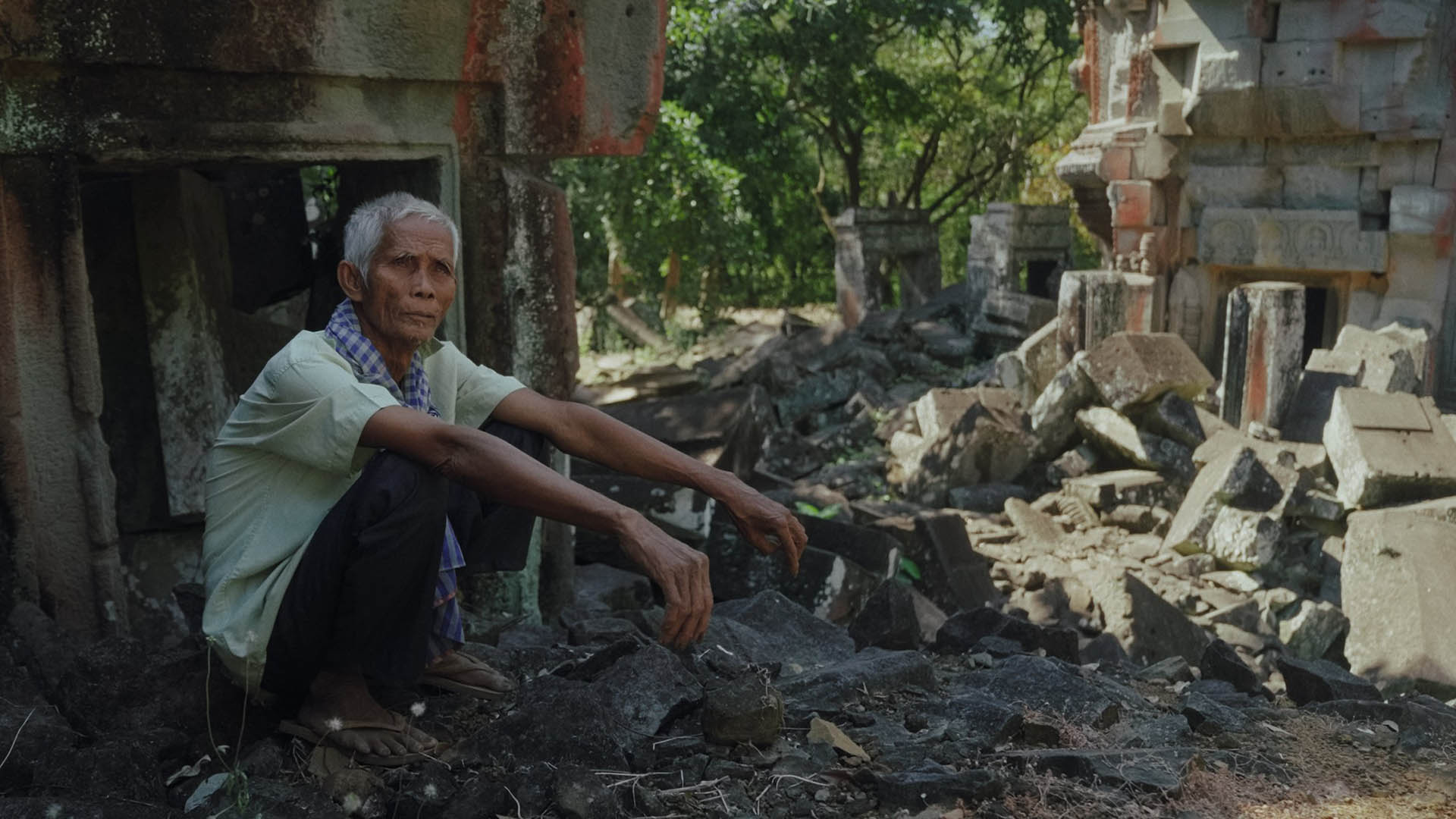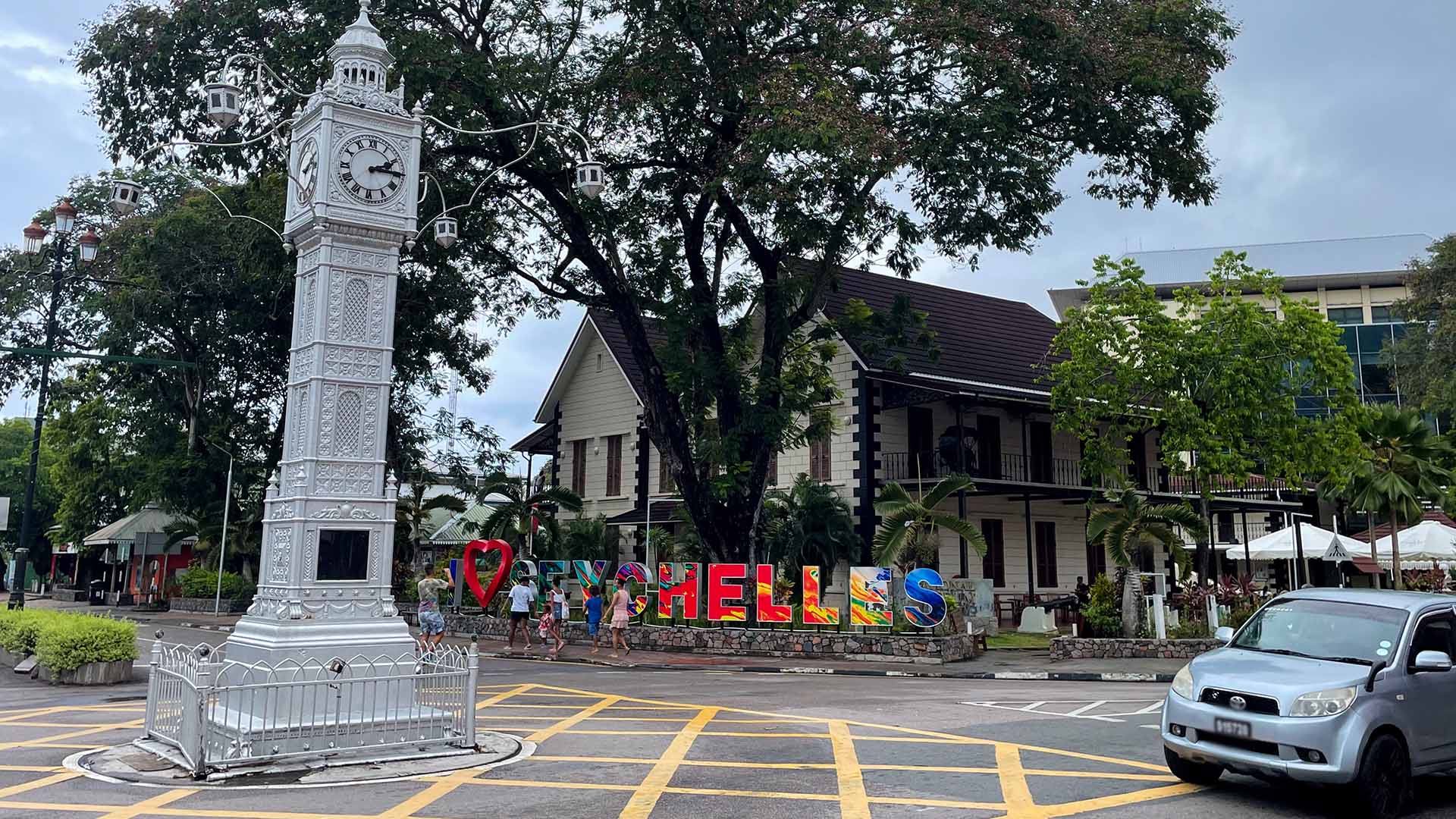For decades, Douglas Latchford cut a romantic figure: The genial Englishman was an explorer of jungle temples, a scholar and a connoisseur seduced by the exquisite details of ancient sculpture.
Helicoptering into remote Cambodia to visit Khmer Empire cities, he risked land mines to satisfy his curiosity. Beginning in the 1970s, he amassed one of the world’s largest private collections of Khmer treasures, mostly Hindu and Buddhist sculpture, the remains of a civilization that flourished in Southeast Asia a thousand years ago. He co-wrote three glossy books on the subject.

“The sculpture and architecture created by the Khmer to honor their gods and their rulers are among the major artistic masterpieces of the world,” he wrote in the first of the three, “Adoration and Glory.”
Yet while Latchford professed reverence for Khmer achievements, he was also trafficking in and profiting from antiquities pillaged from that civilization’s sacred temples, according to U.S. prosecutors, part of a decades-long ransacking of Cambodian sites that ranks as one of the most devastating cultural thefts of the 20th century.
When the United States indicted Latchford in 2019, it seemed at last that hundreds of stolen items he had traded might be identified and returned: Prosecutors demanded the forfeiture of “any and all property” derived from his illicit trade over four decades. But then the 88-year-old Latchford died before trial, leaving unresolved a tantalizing question: What happened to all the money and looted treasures?
The answer lies, at least in part, in previously undisclosed records describing secret offshore companies and trusts that Latchford and his family controlled. The records are part of the Pandora Papers, a cache of more than 11.9 million documents obtained by the International Consortium of Investigative Journalists and shared with The Washington Post and other media outlets around the globe.
The trust and corporate registration records obtained by ICIJ show that three months after U.S. investigators began linking Latchford to looted artifacts, he and family members set up the first of two trusts, named after the Hindu gods Skanda and Siva, on the Island of Jersey, a secrecy haven in the Channel Islands between England and France. The Skanda Trust held Latchford’s antiquities collection: Among its treasures were bronzes of Buddha, Lokeshvara and other religious figures. One of the relics was a looted Naga Buddha valued at $1.5 million. Latchford’s assets in the Skanda Trust were later transferred to the Siva Trust.
While Latchford’s family members said the trusts were formed for tax purposes and estate planning, the secrecy surrounding them poses difficulties for investigators seeking to find and repatriate items that he may have looted. Cambodian officials said that they don’t know what items Skanda held and that they have never heard of Siva Trust. They consider Khmer relics taken from the country without permission to be looted and want them back, and have assembled a team to track down thousands of them.
These objects are not just decorations, but have spirits and are considered as lives. It is hard to quantify their loss to our temples and country– Phoeurng Sackona, Cambodian minister of culture and fine arts
“We will never give up pursuing the return of our heritage,” said Phoeurng Sackona, the Cambodian minister of culture and fine arts.
“These objects are not just decorations, but have spirits and are considered as lives,” she said. “It is hard to quantify their loss to our temples and country — losing them was like losing the spirits of our ancestors.”
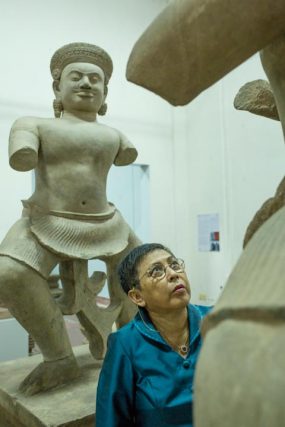
U.S. investigators continue to pursue the return of items from the Latchford operation, said two people close to the probe who were not authorized to discuss it.
The confidential records prompted an international hunt for Latchford-linked antiquities by The Washington Post, ICIJ, the BBC, The Guardian, Spotify and the Australian Broadcasting Corporation. This led to a broader examination of the global trade in art, a realm in which shell companies and trusts conceal smuggling, and some famed institutions and private collectors buy items of murky origin.
The investigation found that while a number of museums have returned several Latchford-linked pieces in years past, at least 27 such items remain in prominent collections.
The Metropolitan Museum of Art in New York holds at least 12 relics once owned or brokered by Latchford, and another that appears to match a piece described in his indictment. An additional 15 were found in the collections of The British Museum in London, the National Gallery of Australia, the Denver Art Museum and the Cleveland Museum of Art.
These and other museums hold an additional 16 relics that were sold by a Latchford associate who prosecutors said dealt in stolen relics. None of the museums provided records showing that the relics had been exported with the approval of the national government. In at least some cases they said they do not have such documentation.
The items identified by the reporting team probably represent only a small portion of those tied to Latchford and that wound up in museums, because many such sales are private.
Just because a museum relic passed through Latchford’s hands or those of his associates does not necessarily mean that it was looted.
But critics said the looting of Cambodia’s temples was well-known, as was the resulting flood of antiquities for sale. Any Latchford tie, they said, imposes on museums a responsibility to investigate and reveal the origins of the pieces.
Industry guidelines call on museums and other buyers to “rigorously research” the origins of relics before acquiring them and to make their findings public. Museum officials said they follow industry ethics guidelines, and that the standards for acquiring antiquities have evolved over the years.
Museums have been reluctant to return relics to their countries of origin, even items that displayed clear signs of looting, such as statues with severed feet.
“Accusations against Latchford … have been a matter of legal record for nearly 10 years now,” said Tess Davis, a lawyer, archaeologist and the executive director of the Antiquities Coalition, an organization that campaigns against the trafficking of cultural artifacts. “Museum leaders have had more than enough time to do the right thing. Instead, there is deafening silence.”
This year, Latchford’s daughter, Julia Latchford, promised to return what remains of her father’s personal collection, including more than 100 bronze, sandstone, copper and gold antiquities. Last week, the first five relics arrived in Cambodia.
The promised return covers only a portion of the relics Latchford handled. Many others were sold long ago, and neither those relics nor the financial proceeds from their sale will be part of any Latchford donation.
In letters to the Post and ICIJ, attorneys for Julia Latchford and her husband Simon Copleston said that until recently Julia had believed that her father’s collection had been acquired legally. It wasn’t until his death that she discovered he had concealed his dealings from her, the lawyers wrote.
Planning for the Skanda and Siva trusts began “long before any investigations into Mr. Latchford had commenced,” the lawyers’ letters said. In a statement, Julia Latchford said the trusts were “set up for legitimate tax and estate planning” and in addition to the relics, “included multiple family assets” unrelated to Douglas Latchford’s art collection.
The collection included many items with well-documented ownership history, her statement said. The trusts were not used to obscure the origin of looted antiquities or the proceeds of their sale, it said.
Neither she nor her husband has been accused of wrongdoing.
A genuine obsession
Even among the exceptional personalities using offshore companies and trusts — the ultra-wealthy, compromised politicians or others seeking to elude authorities — Douglas Latchford stood out.
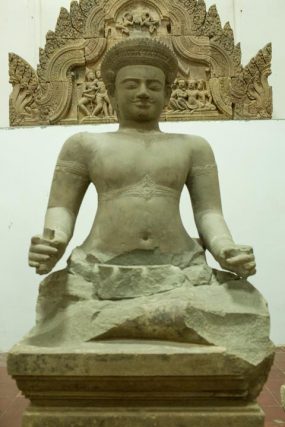
“Early in 2002, a small group of intrepid adventurers … boarded a helicopter and headed to northeastern Cambodia to the fabled city of Lingapura, the grandiose Khmer capital begun by Jayavarman IV in AD 921,” Latchford wrote in Arts of Asia magazine about one of his excursions.
In the article, Latchford detailed the dangers of exploring ancient Khmer temples in a landscape still bearing the marks of warfare.
“Almost immediately,” Latchford wrote, “we found ourselves in the depths of the jungle walking along narrow overgrown paths flanked by ‘skull and crossbones’ on a red background, warning us of land mines.”
As a child, Latchford, who was born in Mumbai to a British banker and his wife in 1931, was fascinated by tales of abandoned temples in Rudyard Kipling’s “The Jungle Book,” he told interviewers.
By age 20, he had moved to Bangkok, the capital of Thailand, where he founded a pharmaceutical and manufacturing distribution company and invested in land, he told interviewers. These businesses, he would later claim, were the primary sources of his wealth. He also became an aficionado of body-building, starting a gym and training champions from Thailand and Cambodia. He was a frequent guest at the lavish dinner parties of Bangkok’s elite.
The passion that would define his life, however, lay elsewhere. He was about 26 when he bought his first Khmer relic — a 24-inch sandstone statue of a female torso — for $700 in an area of Bangkok known as “Thieves Market.” It had no feet or arms, but Latchford was smitten, he said in an interview with the Bangkok Post.
Relics became a lifelong fascination. With Emma C. Bunker, a professor of Asian art history, he wrote three books on Khmer antiquities. Prominent art institutions and galleries called on him to identify Khmer acquisitions. He donated Khmer relics to museums around the world and boasted of selling them to the Rockefellers. In 2008, he was granted the equivalent of knighthood by the deputy prime minister of Cambodia for his donations to the country’s national museum.
It was a genuine obsession, friends said.
“Collecting is a sort of a disease really,” said Angus Forsyth, a collector and Hong Kong lawyer who went on a couple of the Latchford-organized helicopter trips into the jungle. “Those with the disease like to find fellow sufferers.”
Latchford’s infatuation with Khmer artwork coincided with a hot market for antiquities looted from Cambodia and neighboring Thailand and Laos. All three countries were part of the Khmer Empire, which flourished from the 9th to the 15th centuries.
Beginning in the 1970s, amid the tumult of civil war and Pol Pot’s genocidal regime in Cambodia, the temple complexes of the Khmer Empire — including three designated by UNESCO as World Heritage sites — fell prey to massive bouts of ransacking. Organized networks, often headed by members of the military or the Khmer Rouge, Pol Pot’s radical communist movement, hacked statues from their pedestals. Dynamite blasted other relics loose. Entire walls were trucked away. Proceeds from this pillaging, experts say, helped fund the fighting. The looting continued into the 2010s.
One particular target was the ancient city of Koh Ker, with its 76 temples and aqueducts, statuary and a seven-level pyramid. The statues of Koh Ker were distinctive and revolutionary for their time: Artisans carved sandstone masterpieces that were intricately detailed, larger-than-life and often infused with dynamic movement.
Before 1965, the temple complex had been all but unreachable, but then a road was built, benefiting locals but also giving looters easy access to the area.
To serve antiquities dealers seeking particular treasures, looters hunted for specific relics, guided by photographs that were provided to them, said Angela Chiu, a scholar who has written a book on Asian art. To ease the consciences of their wealthy clientele, dealers fabricated stories to obscure the fact that the items had been looted.
“Many even justified the removal of artifacts from Cambodia as acts of rescue and presented collectors as saviors,” Chiu said.
Items that would fetch millions of dollars in the West were sold for a pittance by armed groups and desperate Cambodian villagers.
One former looter told a researcher that he had traded a large statue of Ganesha, the Hindu elephant god, for a water buffalo.
Another piece — a sandstone statue that was half-woman, half-bird — was sold by looters for $500, he told the researcher from the National Museum of Cambodia.
The looters stole a third object from the same site, a Skanda figure sitting on a peacock, transported it by oxcart to the border with Thailand, and sold it for about $600.
In the middle of the illicit trade was Latchford, who, according to prosecutors, trafficked in antiquities from the early 1970s until at least 2010.
All three of those pieces stolen from Koh Ker — the Ganesha; the half-woman, half-bird figure; and the Skanda — have Latchford connections.
Latchford brokered the sale of the Ganesha, Cambodian authorities said. He sold the Skanda sitting on a peacock to an American private collector for $1.5 million, according to the U.S. court documents. All three pieces were featured in one of his books—a practice Latchford used in order to give looted items an air of legitimacy and ease their sale, prosecutors said.
Emails later seized by prosecutors tied him to criminal networks that had ransacked sacred temples.
In one such email, apparently written from Bangkok to a Manhattan dealer, Latchford shared his enthusiasm for a Buddha statue found in Cambodia. An attached picture showed it still covered in dirt.
“Hold on to your hat, just been offered this 56 cm Angkor Borei Buddha, just excavated, which looks fantastic. It’s still across the border, but WOW.”
None of this was widely known, however, until Latchford’s fall from grace began in 2011, the year he turned 80.
It started with a discovery by a French archaeologist.
A magnificent 10th-century statue was about to be put on the auction block at Sotheby’s in New York. Dubbed “the Athlete,” the piece depicts a massive figure, adorned with intricately carved jewelry and an elaborate conical headdress, shown leaping into the air. The auction house described the statue as being “among the great masterpieces of Khmer art” and estimated its value at $2 million to $3 million.
In the Sotheby’s advertisement and other sources, archaeologist Eric Bourdonneau found clear evidence that the statue had been looted: Its legs exactly fit the severed feet on a pedestal that looters had left behind at the Koh Ker temple of Prasat Chen. He identified the statue as Duryodhana, the protagonist in a nine-statue tableau that depicted the climactic battle scene from a Hindu epic poem, the Mahabharata.
Upon learning that the statue was likely stolen, the deputy prime minister of Cambodia contacted U.S. authorities to stop the sale, with hours to spare. The aborted sale triggered a U.S. federal investigation, and, eight years later, Latchford’s indictment.
As investigators close in, relics are moved offshore
U.S. prosecutors’ indictment of Latchford sought to compel him to surrender any looted relics and any money he had made from sales. Such forfeitures are common in cases of stolen artwork.
But offshore companies can provide protection from this kind of accountability.
In the spring of 2011, according to documents obtained by ICIJ, members of the Latchford family turned to Trident Trust, one of the many companies that specialize in helping wealthy families create offshore companies and trusts, a practice that critics say allows them to evade taxes and government oversight.
Trident Trust has offices in more than 20 countries and other jurisdictions, nearly all of them previously named by the Organization for Economic Cooperation and Development and the Tax Justice Network as tax or secrecy havens. According to the Trident website, the company has a long record of working with “high net worth families” to make financial arrangements “that help preserve wealth from generation to generation.”
To begin with, Latchford, his daughter Julia and Copleston, created two trusts registered in Jersey, naming themselves as beneficiaries, trust documents show. Jersey, a self-governing British crown dependency, has “firewall laws” that protect assets from creditors, tax officials and law enforcement agencies.
Such trusts pose a significant obstacle for law enforcement and other investigators seeking to recover ill-gotten property, largely because they are so difficult to find: There was no requirement for them to be registered with the government.
The laws “are designed to make any kind of discovery of assets difficult,” said Brooke Harrington, a Dartmouth College professor who became a certified trust and estate planner to study wealth management and offshore finances. “And if you don’t have discovery, you won’t get recovery.”
Skanda Trust was formed in June 2011, less than three months after U.S. prosecutors stopped the Sotheby’s sale. The documents obtained by ICIJ show that the trust was set up to hold substantial financial assets, including investment accounts at the wealth management firm Rathbones and HSBC Private Bank, along with holdings in two hedge funds, Headstart Fund of Funds and Limestone Fund SPC Wider Russia. The trustee also assumed control of another Latchford company, Fleetwing Estates Ltd., registered in Hong Kong, which in 2002 purchased a London flat currently valued at about $15 million. Title to the apartment was registered to Julia Latchford and Copleston in 2020, according to property records.
The documents obtained by ICIJ are silent on Skanda’s holdings of Khmer relics. But 80 of them, mostly bronzes, appear “courtesy of Skanda Trust” in a Latchford book published in 2011. Experts said those relics have a collective value of about $10 million. At least one, a Buddha that Latchford sold to the Nancy Wiener Gallery in Manhattan and later was valued at $1.5 million, was looted, prosecutors say.
Separately, 22 bronze pieces that matched photographs credited to Skanda Trust in one of Latchford’s books were listed for sale by the British dealer, Asian Art, owned by Jonathan Tucker and Antonia Tozer, alongside 20 others put up for sale by Latchford, according to a consignment document. The catalogue’s total list price was nearly $2 million. A Belgian gallery, Marcel Nies Oriental Art, listed seven relics in publications that match Skanda Trust pieces published in Latchford’s books. Its owner, Marcel Nies, said he never sold any piece on behalf of Latchford directly and that he wasn’t aware of the gravity of the allegations against Latchford until he was indicted.
The family created the Jersey-based Siva Trust in September 2012.
The trustee for the two entities was a British Virgin Islands-registered “private trust company” that the Latchfords had formed, giving them an extra level of privacy, according to the Pandora Papers. Such companies are not required to reveal their shareholders or directors, making it difficult to identify their true owners.
According to Julia Latchford, the family created the private trust company because it was the most cost effective way to manage the trusts. “It was not designed to obscure the trust structure or what it held, nor to increase secrecy in any way,” she said in a statement.
In relying on companies and trusts created in secrecy jurisdictions, Douglas Latchford joined an array of figures in the art world who have employed such entities to hold assets, often while engaged in theft or fraud.
Over the years, shell companies and trusts have enabled art and antiquities dealers and collectors to engage in a variety of illicit schemes: laundering money, bidding up prices of artworks they’re selling, disguising ownership of stolen items and evading taxes.
One of the most prolific traders in looted antiquities, Giacomo Medici, who operated from the 1960s into the 1990s, was convicted of using anonymous shell companies to launder stolen antiquities. He denied trafficking in looted art.
Russian oligarchs Boris and Arkady Rotenberg avoided U.S. economic sanctions against them by using shell companies to purchase $18 million worth of art, including a painting by Belgian surrealist René Magritte, according to a U.S. Senate investigation. Representatives of the Rotenbergs have denied allegations of sanctions evasion. Another artwork, a Modigliani, taken from a Parisian antiques dealer by the Nazis, turned up in the possession of a Panamanian company whose owners were revealed by ICIJ’s Panama Papers investigation.
For art investigators, offshore companies and trusts typically lead to a dead end.
“In tracking down stolen pieces, we very often run into a trust — from Liechtenstein or Panama or Cayman Islands or someplace like that — and it makes it very difficult to know who to make a claim against,” said Chris Marinello, whose firm, Art Recovery International, helps people recover stolen pieces. “It can really be a brick wall.”
Buying looted art
Today, antiquities that were handled by Latchford and his associates can be found in museums around the globe. Curators are ethically obligated to investigate the origins of new acquisitions, but some experts say far too little has been done to return to Cambodia pieces that belong there.
It’s difficult to assess how many Latchford pieces were looted because museums generally did not share documentation, and most publish scant information about their ownership history, known as provenance.
Guidelines from the American Alliance of Museums say museums should “rigorously research the provenance of an object prior to acquisition” and “make a concerted effort to obtain accurate written documentation with respect to the history of the object, including export and import documents.”
But details that have emerged from Latchford’s indictment and other sources, including the Chasing Aphrodite antiquities blog, raise questions about the origins of some pieces. Museums have an ethical obligation to answer them, experts said.
The Met collection, for example, has a sandstone statue of a figure called a Harihara. The information published by the museum says the piece came from southern Cambodia and describes its style as “pre-Angkor period.” It was purchased from one of Latchford’s collaborators, Spink & Son, in 1977.
A very similar piece is described in the Latchford indictment — same religious figure, same dealer, same period, same location — and it apparently was looted. According to a November 1974 letter from a Spink representative, Latchford, at that time, had agreed to consign a “Pre-Angkor Hari Hara” to the auction house, and the piece was “supposedly recently excavated in Cambodia near the South Vietnamese border.” The Spink & Son representative, according to prosecutors, was aware of Latchford’s plans to create false documentation for Khmer antiquities.
Spink & Son was acquired by Christie’s decades ago. The auction house said it would never sell items it had reason to believe were stolen.
The Met declined to respond to reporters’ questions about the provenance of its Harihara piece or any of the 12 relics purchased from or donated by Latchford currently on display in its collection. Questions about seven Khmer relics acquired through his associates also went unanswered.
In a written statement, a spokeswoman for the Met said it was “unknown” whether the Harihara in its collection is the same as the Harihara that prosecutors say was looted. The statement said the museum applies “rigorous provenance standards” to new acquisitions and to relics long in its collections. The museum had “a long and well documented history of responding to claims regarding works of art, restituting objects where appropriate, being transparent about the provenance of works in the collection,” the statement said.
Another statue fitting the description of a relic cited in the Latchford indictment is at the Denver Art Museum. It is a sandstone statue of the goddess of transcendent wisdom, Prajnaparamita. At the time of its acquisition, Latchford provided documents with conflicting information about its ownership history, according to his indictment. One such document was a letter from a person prosecutors described as a “false collector” who wrote that Latchford had purchased the piece from him in 1999. Other documents, however, showed that the piece had been in Latchford’s possession five years earlier. Over his career, prosecutors said, Latchford presented “numerous” such letters purportedly written by the “false collector,” even after that person died in 2001.
The Denver museum, which has six Latchford relics in its collection, says it “proactively contacted cultural officials in Cambodia about a year ago, and our dialogue with Cambodia remains ongoing about their provenance.”
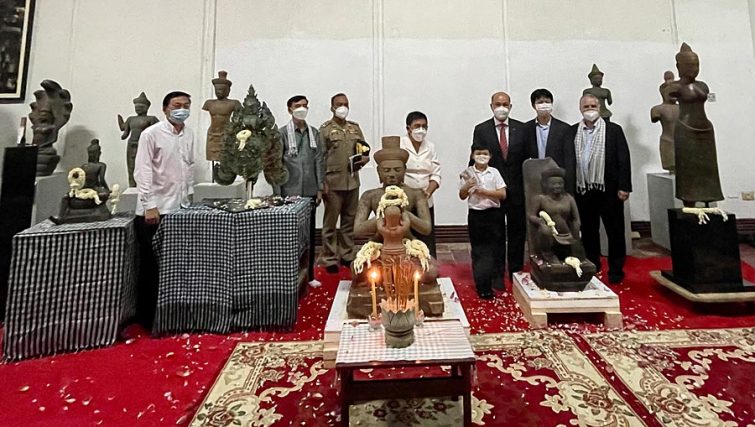
Bradley J. Gordon, a lawyer representing the Cambodian Ministry of Culture and Fine Arts, said the ministry’s team of experts is researching the whereabouts of looted relics.
“We are tracking the ownership and provenance of Khmer antiquities worldwide, and we are calling for the return of all of them that are not properly owned and provenanced,” Gordon said.
Many museums and other art buyers, for decades, have faced complaints that they ignore evidence of artifact theft and that this indifference provokes more pillaging.
A study published by Davis, the lawyer and archaeologist, found that of 377 Cambodian relics sold at auction by Sotheby’s from 1988 to 2010, 71 percent had no listed ownership history.
Moreover, museums, galleries and auction houses have proved reluctant to return relics to their countries of origin until confronted with overwhelming evidence that the items were looted. This approach places the burden of proof on the country of origin.
For nearly 20 years, for example, two massive, kneeling Koh Ker sandstone statues, crowned with intricately patterned cone-shaped headdresses, flanked the entrance to the Asian Art Gallery at the Metropolitan Museum of Art. The figures, dubbed the “kneeling attendants” by curators, crouch as if genuflecting.
That the statues were stolen should have been obvious, some art scholars said.
They were known to be from Koh Ker, where looting had been rampant, and the museum had acquired them in pieces, another red flag, experts said. Looters often cut statues into pieces for transportation. Latchford and the dealer Spink & Son donated one of the heads in 1987, and then, in 1992, Latchford donated the bodies. The second head came from another donor.
Even more damning were marks on the statues.
“Traces from the looters’ chisels were clearly evident on the knees,” said Bourdonneau, the archaeologist and Koh Ker expert. Despite these indications, the Met accepted the donations and held onto the statues for years before returning them to Cambodia in 2013.
There was ample evidence that the statues belonged to the same stolen set as Sotheby’s Duryodhana, Bourdonneau said, but it was only when archaeologists discovered pedestals in Cambodia that perfectly matched the “kneeling attendants” that the museum relinquished them.
This scenario was repeated when the Cambodians approached other museums — including the Norton Simon Museum in Pasadena, Calif., the Denver Art Museum and the Cleveland Museum of Art — about returning Latchford-linked statues with spotty provenance, according to Anne LeMaistre, a former head of UNESCO in Cambodia. Only when matching fragments were discovered on site in Koh Ker did the museums return the relics.
The Met said that its return of the Koh Ker statues was “historic” and paved the way for other repatriations, while the art museums in Denver and Cleveland both said they reached out to the Cambodian government before returning the statues. The Norton Simon Museum did not comment.
The origin of antiquities in private collections can be even more of a black box. A 2008 Architectural Digest article included photos of more than a dozen Khmer statues displayed in an opulent Palm Beach, Fla., mansion owned at the time by billionaire George L. Lindemann who has since died.
Reporters showed the magazine photographs to a team of 12 art experts and archaeologists and others working with Cambodia’s Ministry of Culture. They said that six of the pieces, which they consider among Cambodia’s most important cultural treasures, were “definitely looted.” One statue, a half-woman, half-man, was stolen from a temple in Koh Ker, the experts said. Gordon, the lawyer representing the ministry, described the temple as “the Cambodian equivalent of King Tut’s tomb.” One of the photos shows three heads hung above an ornate fireplace. Cambodian authorities believe those pieces were stolen from the walkway of giants leading to Angkor Thom in Siem Riep.
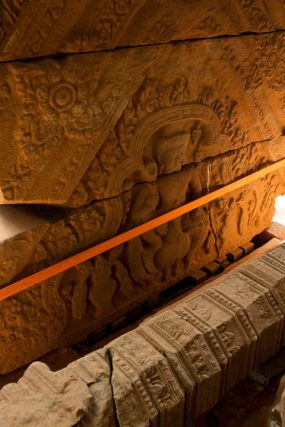
In another photo, a larger-than-life figure gazes serenely over Lindemann’s dining room. According to experts, the piece is so significant that its empty pedestal is on display in Cambodia’s national museum. The Cambodian recovery team believes it is one of three statues still missing from the Mahabharata battle scene.
Lindemann’s widow and sons did not respond to repeated requests for comment.
Public glimpses into private collections are exceedingly rare, complicating the Cambodians’ efforts to recover their cultural heritage.
Experts say private collectors, museums and auction houses get away with acquiring stolen art because of a lack of external regulation and because ownership records and details about purchases and donations are often kept secret.
“Secrecy eases every step of the process for a looted antiquity to enter the market, from its illicit removal to its circulation among dealers and private and public collections,” said Chiu, the scholar of Asian art. “The lack of transparency enables the truth to be hidden and distorted and the antiquity washed of its illicit origins, so that it can be put on display in a museum, the ultimate marker of legitimacy.”
Recovering relics
After more than three years of negotiations, the Cambodians have begun to recover some of the art that passed through Latchford’s hands. In January, shortly after her father’s death, Julia Latchford announced that she would return his private collection to Cambodia. It will be the biggest repatriation of relics in the region’s history, and it received favorable media attention. A New York Times article proclaimed that the gift “honors, if not absolves” her father.
Douglas Latchford initially had sought to use the donation as a bargaining chip in an effort to gain legal immunity for himself, family members and close associate, Bunker, according to a leaked 2018 memo addressed to the U.S. ambassador to Cambodia and acquired by ICIJ and its reporting partners.
“Mr. Latchford has sought to attach numerous conditions to his offer,” Gordon, the lawyer for Cambodia, wrote in the memo. Gordon said Latchford’s primary concern appeared to be protecting from criminal prosecution himself, his longtime associate and co-author Bunker, and his family members. “We believe the failure to grant this condition may completely negate his motivation to part with these antiquities,” Gordon wrote.”
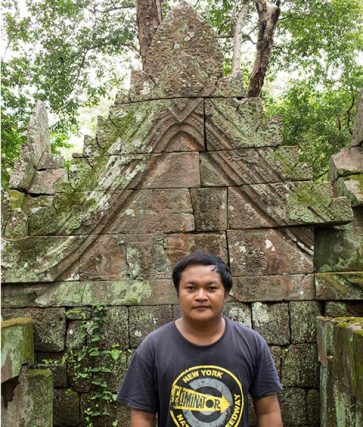
During negotiations over the return of his entire collection, Latchford tried to sell $3 million worth of Khmer relics consigned to the gallery Asian Art, according to emails obtained by ICIJ. The emails further revealed that one of the gallery’s owners, Jonathan Tucker, was aware that some of these pieces lacked provenance when he put them up for sale. Tucker did not respond to requests for comment.
Julia Latchford said in a statement that at the time she was not aware that her father was attempting to link the return of his collection to immunity, and that her decision to return the relics was “because she had become convinced that it was the right thing to do.”
Thousands of stolen relics are still out there. Cambodian archaeologists have begun the painstaking process of restoring some of the country’s thousands of ransacked temples. One such archaeologist is Thach Phanit, who has been helping to excavate the Koh Ker temples in hopes of finding fragments and other evidence that can be used to persuade anyone now in possession of Cambodian artifacts to return the country’s stolen heritage. These lost statues, he said, are “the souls of the temple.”
“Without the soul, like the human body, we are just dead,” he said. “Returning the statues is like returning the souls of the ancestors back to the country.”
Until they succeed, empty pedestals will collect dust in the National Museum of Cambodia, waiting for their occupants’ return.
Contributed reporting: Annie Gilbertson of Spotify, James Oliver and Rory Tinman of the BBC, David Conn and Anne Davies of the Guardian and Mario Christodoulou of ABC Australia.

